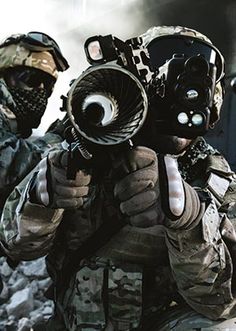Last year, I reported on the secondary danger that can arise from using the shoulder-launched heavy artillery Carl Gustaf. Carl Gustaf has a twin though – heavy artillery known as SMAW… and, just like with Carl Gustaf, SMAW is strong enough both to blow up a tank and to cause severe brain injury to the shooter in the process.
Late last month, NPR reported on the effects the use of SMAW had on two former soldiers. After every shot, you felt a “concussive wave”, one soldier said, before continuing to say “it’s an awesome thing”. Based on this description, as well as these soldiers’ ongoing support for the military, one can see that “blaming” an institution that they love so much for their current deficits is a difficult thing for these soldiers. For the same reason, many other soldiers find themselves in a conundrum when it comes to their opinion of the military. (Statistics show, for example, that though enrollment in the military is at a low, retention is up.) However, it seems that the military recognizes that, in some way, they, specifically their weaponry, are at fault for some injuries, as they keep putting more money into research (e.g. with animal models). They also have set up a TBI Recovery Support Program and, as a member of that Program states, “If you talk to us in a year… I think we’re going to have exponential growth in our knowledge.”
However, is some of this concern over brain injury just unnecessary worry? The soldiers NPR quotes in their article ask that question. (This is very similar to the responses of some players, coaches and parents regarding brain injury in football.)
(Another interesting subject in the above-linked NPR article is the difficulty soldiers, who acquire a brain injury while not in combat, have in getting healthcare coverage for their recovery.)

